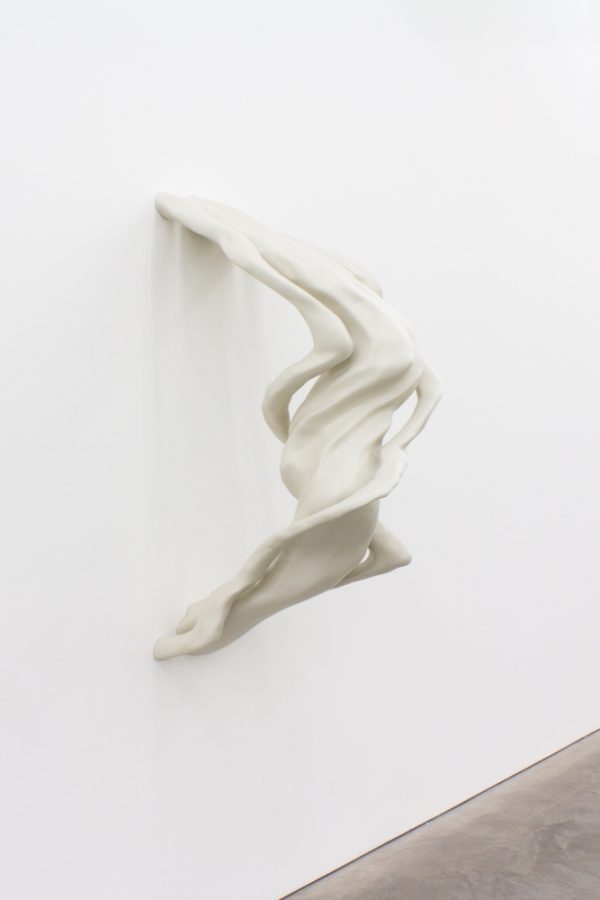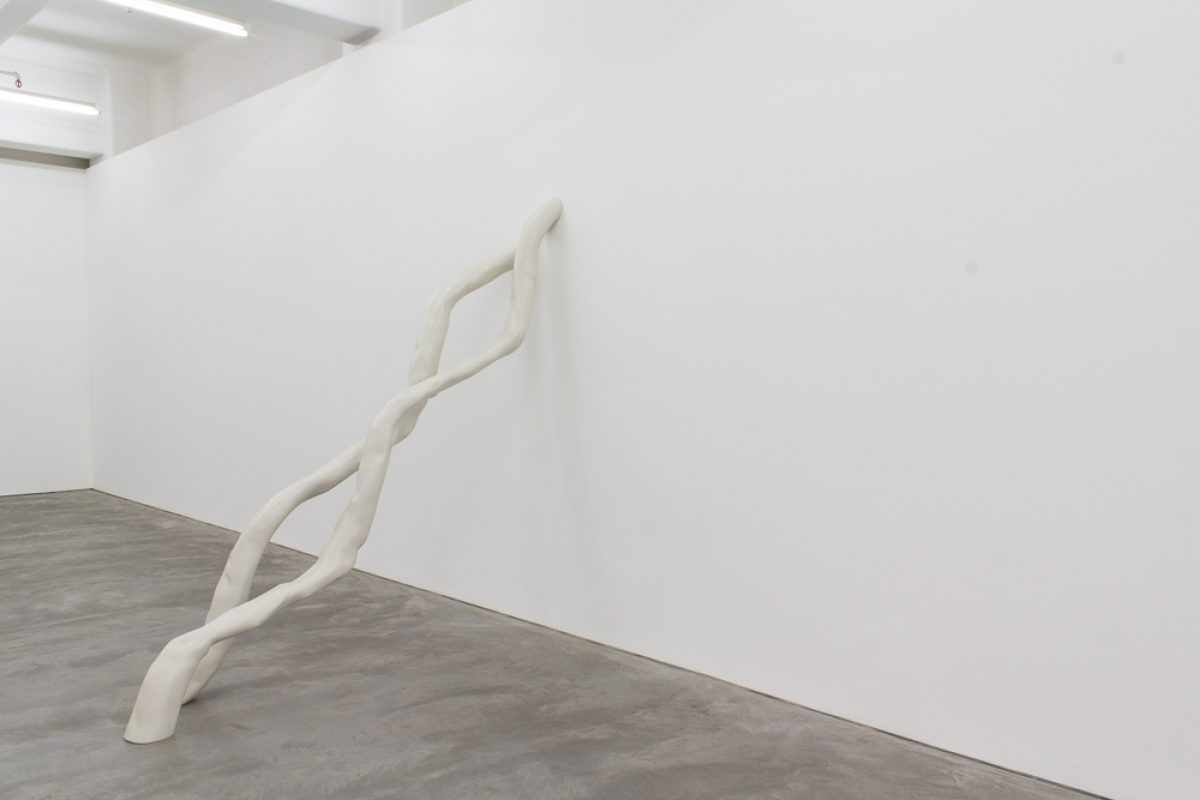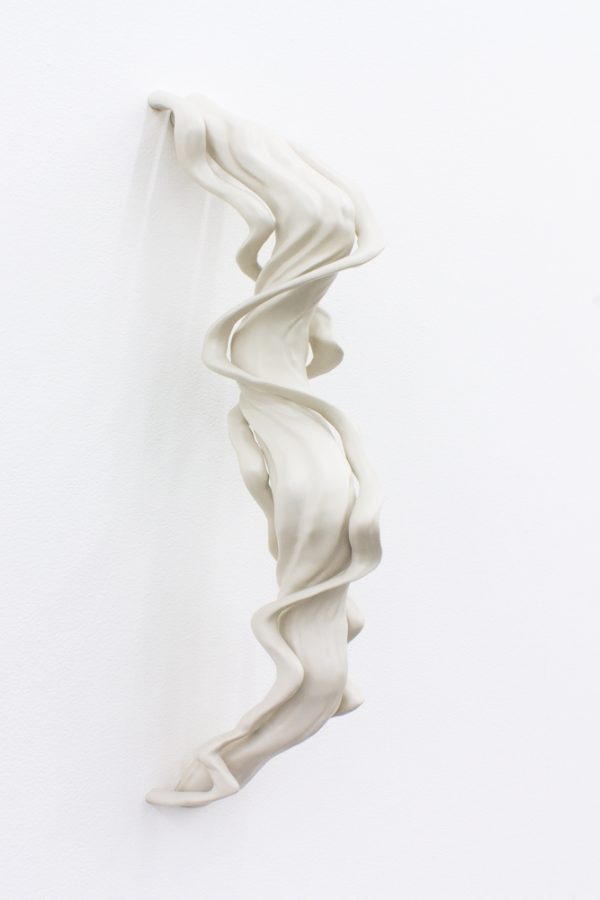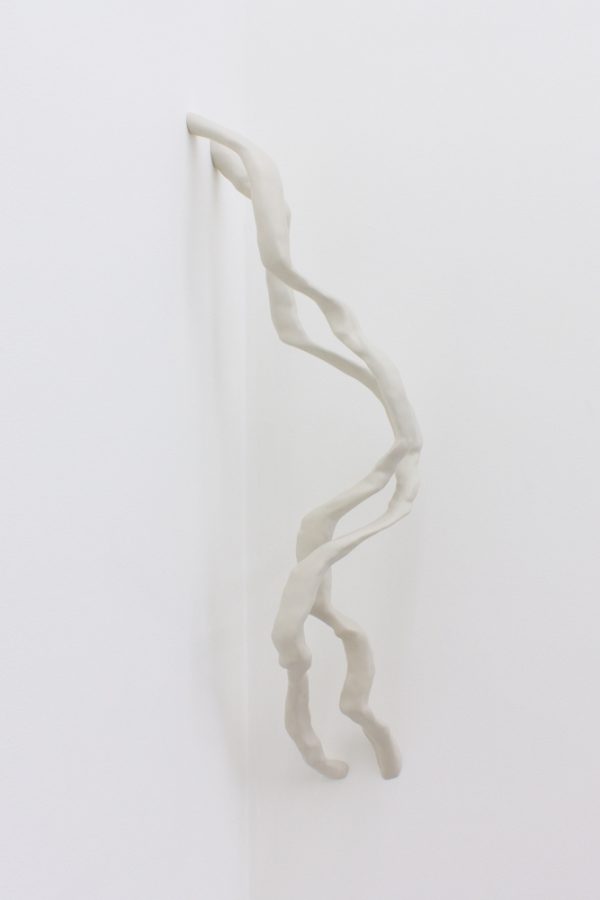Truths Unveiled by Time
13th August – 27th September 2014
Anna Schwartz Gallery
The understanding of time as a constant, unified and quantifiable phenomena is a convenient one. To question this experience quickly raises existential problems, to which science and philosophy offer a variety of consolations. Zeno’s paradox of Achilles and the Tortoise describes the impossibility of the swift runner’s attempt to overtake even the slowest opponent who started earlier; as the first to begin will always hold a lead. This of course requires the steady evaporation of time. Descriptions of any form of time invariably involve the illustration of particular kinds of movement, and in Daniel Crooks’ elegant sculptures, time is likewise located physically, materially, in space.
The 3D-printed and CNC-cut objects in ‘Truths Unveiled by Time’ are the manifestation of movement, captured and reproduced. As in the video works he is known for, here Crooks has gathered from life a set of data, isolated and reconfigured in a way that reveals the motion of a plane as a three-dimensional volume. The initial research for this body of work was developed over a number of years, before the technology required to achieve it was available. Earlier this year, Crooks was invited by Ars Electronica’s Futurelab in Linz, Austria, to work on producing a new kind of ‘3D slicing camera’. This research enabled him to record, at high speed, a sequence of detailed cross-sections of a moving subject. The resulting data was then accumulated into a model, a kind of time-stack, to be realised using computer controlled fabrication techniques.
The actual, physical objects describe discrete points of the artist’s continuous motions in space extruded through time. Having experimented with these systems by tracking his own movement, Crooks has produced works that converse directly with his earlier Imaginary Object videos, and his ongoing series of photographic self-portraits that are made by joining the stilled frames of a moving video camera.
Despite the specifically synthetic mode of manufacture of these first sculptures by Crooks, using intangible data to shape plastic and polyurethane, the finished materiality evokes a range of more familiar, organic substances such as porcelain, milk, or bone. There is also, of course, the direct visual correspondence of these works to marble, that classical material of monuments, valued for its resistance to the wear of the ages.
Indeed, Crooks’ exhibition title refers to one particular work from the canon of Western sculpture. Gian Lorenzo Bernini’s Truth Unveiled by Time, an allegorical work, is famous as much for its state of eternal incompleteness, as for its sculptor’s mastery of representing dynamic motion in static stone. Begun in 1646, the work was intended to depict the male figure of Time unveiling the female figure of Truth; but eight years later, Bernini had halted work on the piece, having completed only the seated nude form of Truth beneath a floating veil. Time, it appears, has remained impossible to define. By his absence he is all the more visible, and the revelation is reversed.
Leaving time aside, as Bernini did, the definition of truth similarly becomes questionable. Crooks even suggests a plural: Truths. How true-to-life can a reproduction be, when it is made in the age of post-lens imaging? To explain Crooks’ works as isolated moments of movement, ‘from life’, is to ignore the intensive mediation that happens at each step of the import, accumulation, processing and export of information. Their veracity is as mediated as Bernini’s, and the process of CNC cutting not dissimilar from the subtractive process of chipping and polishing stone. The idea of ‘printing’ an object is still a novel one. Crooks’ works picture a kind of reality that has been impossible to even visualize without the use of technology. They show phenomena that the unassisted human eye cannot perceive. But they do this in a way that quietly insists that these phenomena are not unreal, that perhaps other realities exist, if only we had the means to see them; because without seeing, we are unlikely to believe.
Images

Truths Unveiled by Time #1, 2014
Polyurethane-coated foam
Three pieces, 134 x 52 x 69 cm overall

Truths Unveiled by Time #2, 2014
Polyurethane-coated foam
Two pieces, 270 x 15 cm and 300 x 15 cm

Truths Unveiled by Time #3, 2014
ABS plastic
Three pieces, 72 x 22 x 19 cm overall

Truths Unveiled by Time #4, 2014
ABS plastic
Three pieces, each 120 x 4 cm



